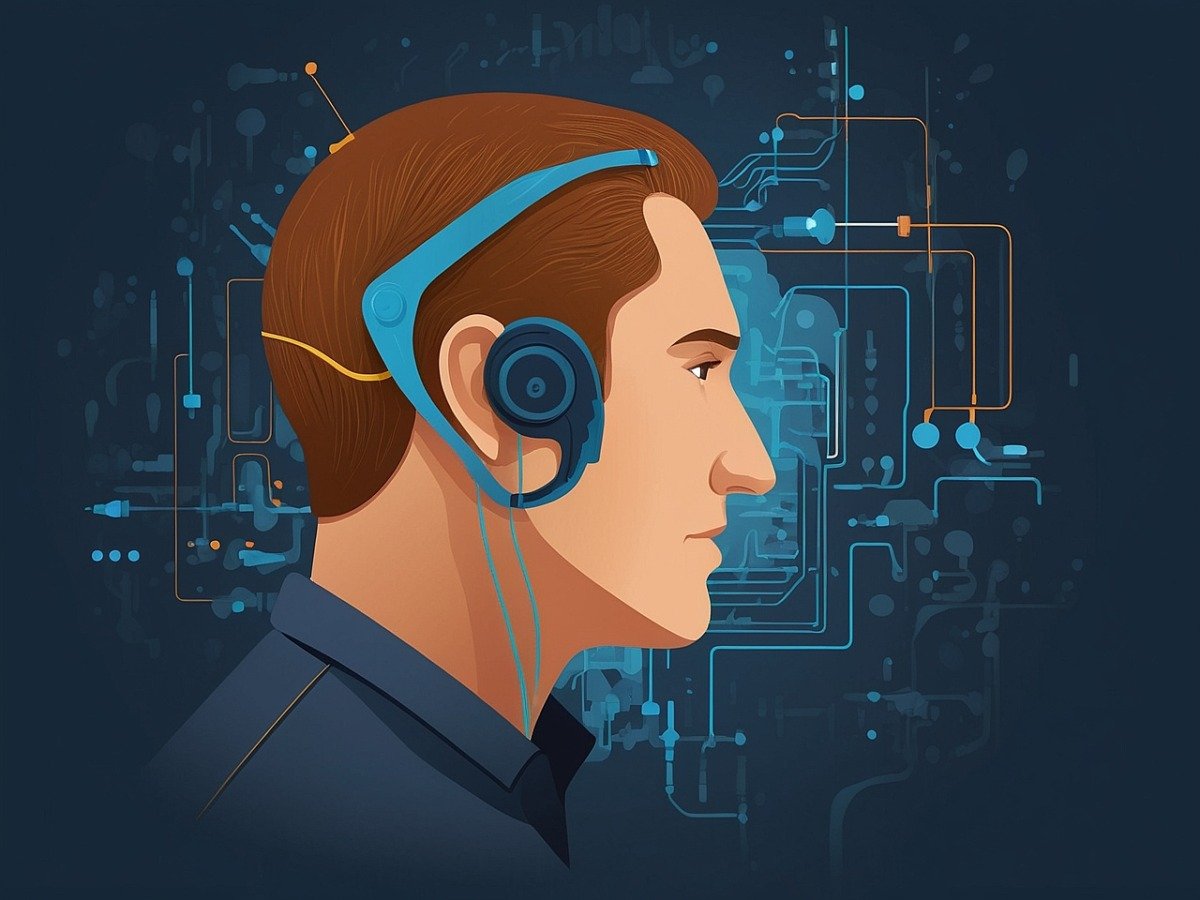The dawn of the 21st century witnessed the success of the Human Genome Project, the quiver of the Braille glove, and the ease of obtaining both an ancestry profile and a diagnosis for genetic disorders from a do-it-yourself at-home DNA test kit. Advancements in healthcare since then have been aplenty – with various new therapies revolutionizing oncological studies; a promising one being regenerative cell therapy. And after decades of research, stem cell therapy could even treat hearing loss.
The discovery of cell therapy
Although cell therapy was first performed in 1958 when French oncologist Georges Mathe transplanted bone marrow stem cells after six nuclear researchers were accidentally exposed to radiation, research picked up pace in the 2000s with the development of induced pluripotent stem (iPS) cells by Japanese researcher Shinya Yamanaka in 2006.
These cells, which mimic transient embryonic stem cells, are derived from skin and blood cells that are reprogrammed into a pluripotent state, enabling them to be differentiated into any cell in the human body. The idea of utilizing these cells for therapeutic purposes was made a reality when iPSCs were used as a resource to create heart cells, to study cardiovascular behavior, which heralded the scope for regenerative medicine.
Furthermore, the use of stem cells to replace bone marrow cells after being destroyed by cancer or exposure to radiation for the treatment of cancer, as well as the potential for stem cells to transform into brain cells and regulate dopamine levels to relieve some of the motor symptoms of Parkinson’s disease – being investigated through ongoing clinical trials – has evidenced the competence of stem cells in therapeutic research for a range of disorders.
With the proven science that stem cells can replenish and potentially take the form of any type of cell in the body, this raises the question: could stem cells be transformed into auditory sensory cells and treat hearing loss?
Hearing loss affects more than an eighth of the global population
Affecting more than a billion people worldwide, with 430 million diagnosed with disabling hearing loss, according to a report by the World Health Organization, hearing loss can be caused by natural factors including aging, chronic exposure to loud noises or drugs, and genetic variations, and it ranges in degree from mild to profound.
“Hearing loss as a totality is a vast global problem. There are currently one and a half billion people in the world with some form of hearing loss, and that’s going to rise to 2.5 billion by 2050. Of those, 500 million have disabling hearing loss; that’s so severe that it affects their day-to-day life and impacts their ability to take full participation in society. Untreated hearing loss has a direct impact on mental health decline and importantly, now it’s been realized it has a direct impact on cognitive decline and particularly dementia,” said Simon Chandler, chief executive officer (CEO) of U.K.-based Rinri Therapeutics, in an episode on the Beyond Biotech Podcast.
Mild hearing loss has been found to double the risk of dementia and people with severe hearing impairment are five times more likely to develop the condition, according to a study by Johns Hopkins Medicine. Chandler explained that as hearing loss gets progressively worse, people tend to avoid social settings as it gets harder to hear speech in noisy environments, which can impact their mental health.
Rincell-1: Rinri Therapeutics’ stem cell therapy for hearing loss
While surgical procedures to treat abnormalities of the eardrum or the ossicles (bones of the ear) are now routine, the medical devices currently used to treat inner ear (cochlea) dysfunction, hearing aids and cochlear implants, while remarkable, never fully restore hearing even with the best outcomes. Moreover, implants can sometimes cause a loss of residual hearing and, although rare, can pose a risk of meningitis.
To expand treatment options and develop therapeutics for hearing loss, spinout of The University of Sheffield, Rinri Therapeutics, has evolved a regenerative cell therapy pipeline, on the back of chief scientific officer Marcelo Rivolta’s nearly 25 years of research in the field.
Rinri’s lead product is Rincell-1, a first-of-its-kind inner ear cell therapy that hopes to recover sensorineural hearing loss, specifically hearing loss caused by damage to the auditory nerves in the cochlea.
Derived from embryonic stem cells, Rincell-1 is an auditory neuron progenitor cell line that can specifically differentiate into mature auditory neuron cells. These cells are delivered to the cochlea, where the remnants of the auditory nerves reside, then differentiate into auditory neurons and send out neurites to connect to the auditory hair cells and back towards the brain stem; reconnecting the circuitry within the inner ear.
Sensorineural hearing loss is a cellular problem, Chandler pointed out. As a result, he believes that the logical solution to restore hearing is to repair this cellular damage with functional cells.
“We are taking the approach of transplanting in cells that can become functional mature cells and restore the cytoarchitecture of the inner ear, and therefore, restore hearing,” said Chandler.
Rincell-1 has successfully progressed through preclinical development and is looking toward first-in-human clinical trials. In its first trials, Rinri has proposed to administer Rincell-1 in combination with cochlear implants – devices designed to bypass damaged hair cells and directly stimulate auditory neurons – to enable the recording of objective measures of cochlear function rather than rely on more subjective measures such as speech recognition.
“We’ll look at word recognition outcomes as well, but we need objective measures because we’ll then see categorically, what effect our therapy has on cochlea’s function without the need for people to interpret words and sounds,” said Chandler.
Chandler also said that as cochlear implants rely on auditory neurons to function, “there is a potential synergy” for Rincell-1 to be delivered alongside cochlear implants, “as there is the potential for Rincell-1 to improve the performance of cochlear implants by enhancing the number of neurons in the cochlea.”
However, this does not rule out the possibility for stem cell therapy to function as a monotherapy for hearing loss in the future.
“We are very keen on exploring how we bring costs down in the future so that we can roll this out – should this be successful – not just the most wealthy countries, and not just the wealthiest people in those countries as well, but to everybody who could benefit from it.”
Simon Chandler, CEO of Rinri Therapeutics
As most people will have lost a significant number of auditory neurons by the time they hit 60, with, on average, 50% of the auditory neurons lost or damaged in some cases, delivering cells that can differentiate into functional auditory neurons within the cochlea to restore hearing to a higher level of function could reduce the need for medical devices, according to Chandler.
Stem cell therapy for hearing loss: the challenges
Despite the potential, clinical candidates have not yet materialized, owing to the intricate nature of hearing anatomy and hearing disorders.
Moreover, the landscape for biopharmas in hearing loss therapeutic development has been challenging. Like, for example, Massachusetts-based Frequency Therapeutics, which laid off 55% of its staff following a failed phase 2b study of its lead candidate FX-322 last year. The company’s technology was based on regenerating auditory hair cells through the trans-differentiation of residual cochlear cells. Although its safety profile was deemed favorable, the lack of improvements in efficacy led to FX-322 being discontinued.
“Failure is not necessarily always due to lack of efficacy, but because hearing loss has until recently been a very challenging condition to perform clinical trials on because of the way you measure function. There are no biomarkers of hearing loss, you can’t do a blood test and see whether you have hearing loss and establish the underlying etiology,” said Chandler, who thinks that Rinri’s approach to clinical trials will overcome these challenges.
“Traditionally, you use subjective measures, like speech recognition, and they can be quite subjective depending on the audiologist taking those measures, which makes them quite noisy to use as outcome measures.”
Another major challenge is the delivery of stem cells to the inner ear. The cochlea is “notoriously difficult to access” compared to how intravenous drugs are administered, Chandler pointed out. Since it is behind the thick and hard temporal bone, getting past the bone is no easy feat.
“What we have decided to do at Rinri – particularly for our initial clinical studies – is piggyback on the back of the cochlear implant surgical procedure because this is a routine way in which the cochlea is accessed in patients. We only need to do a minor modification of that process to access the sites of administration for our therapy,” said Chandler.
Rinri was able to do this with the help of a 3D model of the cochlea. The model allowed researchers to explore different sites of administration while avoiding nerves and arteries in the process.
Lineage Cell Therapeutics’ candidate in preclinical stages
Although Frequency Therapeutics was unable to progress with clinical studies, Lineage Cell Therapeutics is currently conducting preclinical trials of ANP1, an auditory neuronal cell therapy program for the treatment of hearing loss.
Following success in proof-of-concept studies, the biotech began ANP1’’s preclinical testing last year. Lineage was able to deliver the cells, which not only survived but also showed the ability to migrate. Lineage has two pending patent applications for its candidate at the moment.
Stem cells vs gene therapy
Stem cell therapy differs from gene therapy – a breakthrough in treating children with genetic hearing loss caused by a mutation in the OTOF gene – as it targets a broader patient population since the latter is specifically for those with genetic mutations, comprising around 20,000 people in the world.
“It’s never going to treat the problem of age-related and acquired hearing loss,” said Chandler. “In that sense, what we have is potentially a broad application. Our preclinical data of transplanting hair cells onto a model of the condition suggests that it has the potential to be transformative to patients. It can restore hearing in the model of auditory neuropathy. It can take them from being profoundly to almost totally deaf to being able to have a conversation.”
How affordable will this therapy be?
While hearing loss cell therapy studies are nowhere near the finish line in order to review commercialization, uncertainty regarding affordability looms.
As gene therapies are priced anywhere between a million and over 4 million dollars, it doesn’t reach people in middle- and low-income countries. Chandler is optimistic that stem cell therapy could be more affordable since there are only 30,000 to 50,000 auditory neurons in the cochlea that would need restoring.
“What we have at Rinri is a process that is very robust and scalable. Whilst in the early stage of development where it’s a very low scale, so the cost tends to be relatively high, we are very cognizant of the big problem of hearing loss. Also, the democratization of therapies for hearing loss is very important to us,” said Chandler.
“We are very keen on exploring how we bring costs down in the future so that we can roll this out – should this be successful – not just the most wealthy countries, and not just the wealthiest people in those countries as well, but to everybody who could benefit from it. That’s the only way in which the only way you can do that without bankrupting is by pulling the price down.”
As Rinri Therapeutics prepares to begin clinical trials for Rincell-1 in the U.K. in 2025, Rincell-2 (auditory neuron progenitors derived from iPS cells) and Rincell-3 (auditory hair cell progenitors) are being developed as part of the pipeline.
Despite the many challenges that come with the development of regenerative medicine for hearing disorders, with the progress in current therapeutic research and potentially successful clinical trials in the future, there could be a light at the end of the tunnel to possibly reverse sensorineural hearing loss.
“It is well recognized that hearing loss significantly impacts quality of life, affecting individuals through to economies. A biological solution that can restore hearing to a significant level is potentially transformative to patients,” said Chandler.


New technologies related to stem cell therapy:
This article was originally published in March 2023 and has since been updated by Roohi Mariam Peter in June 2024.























No Comments
Leave a comment Cancel